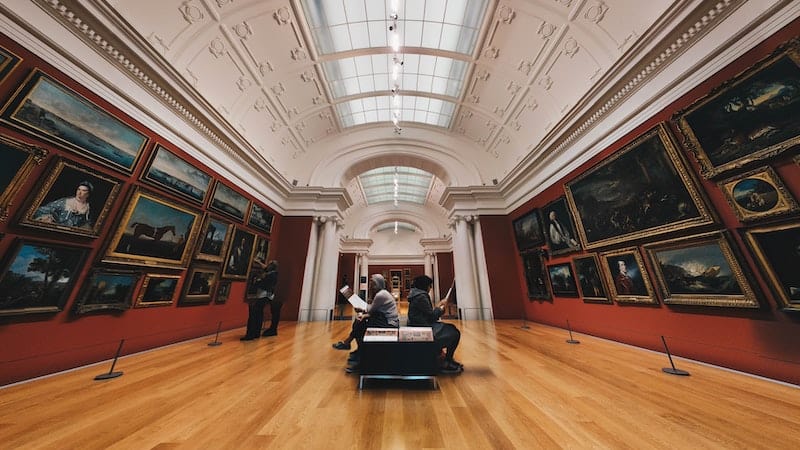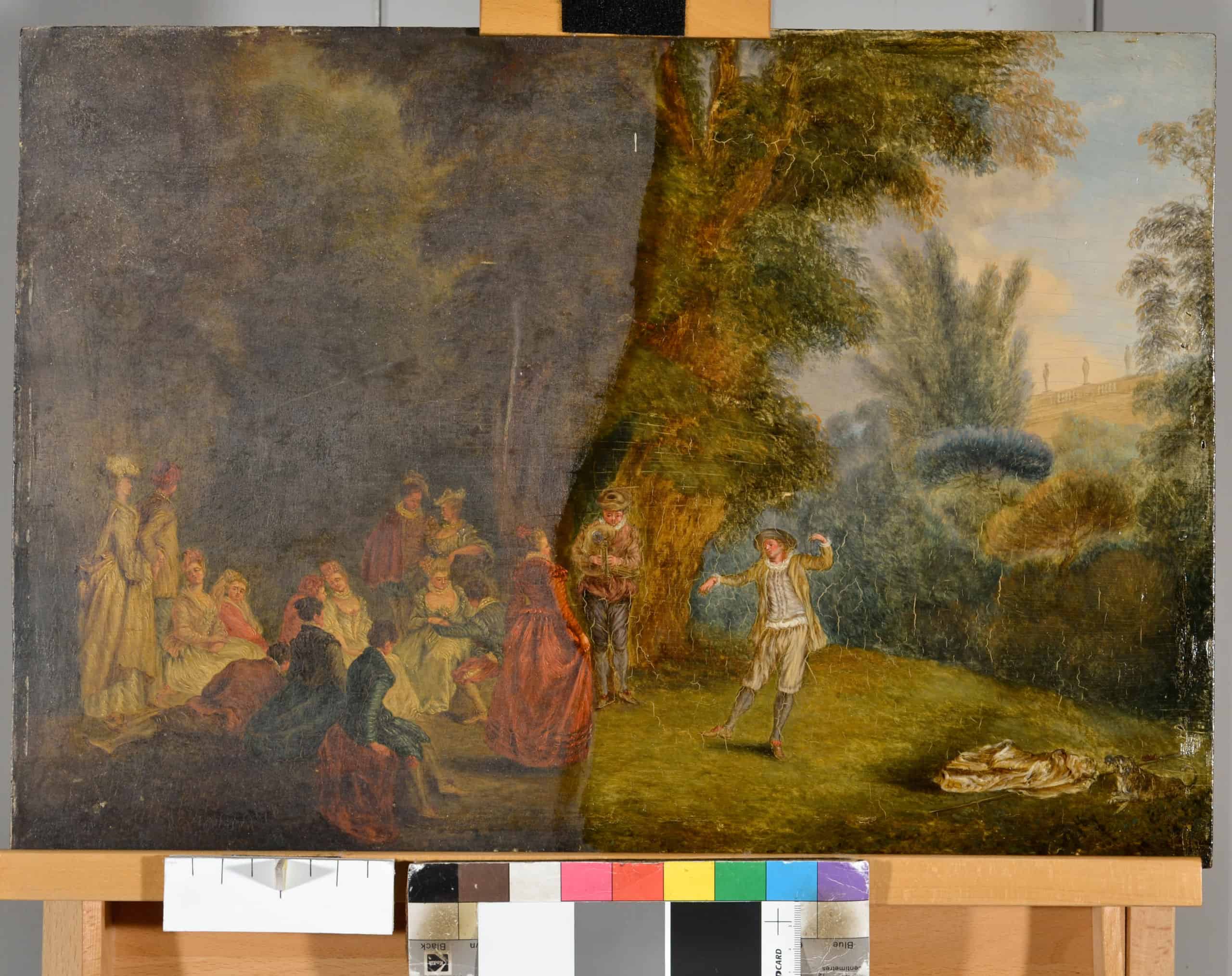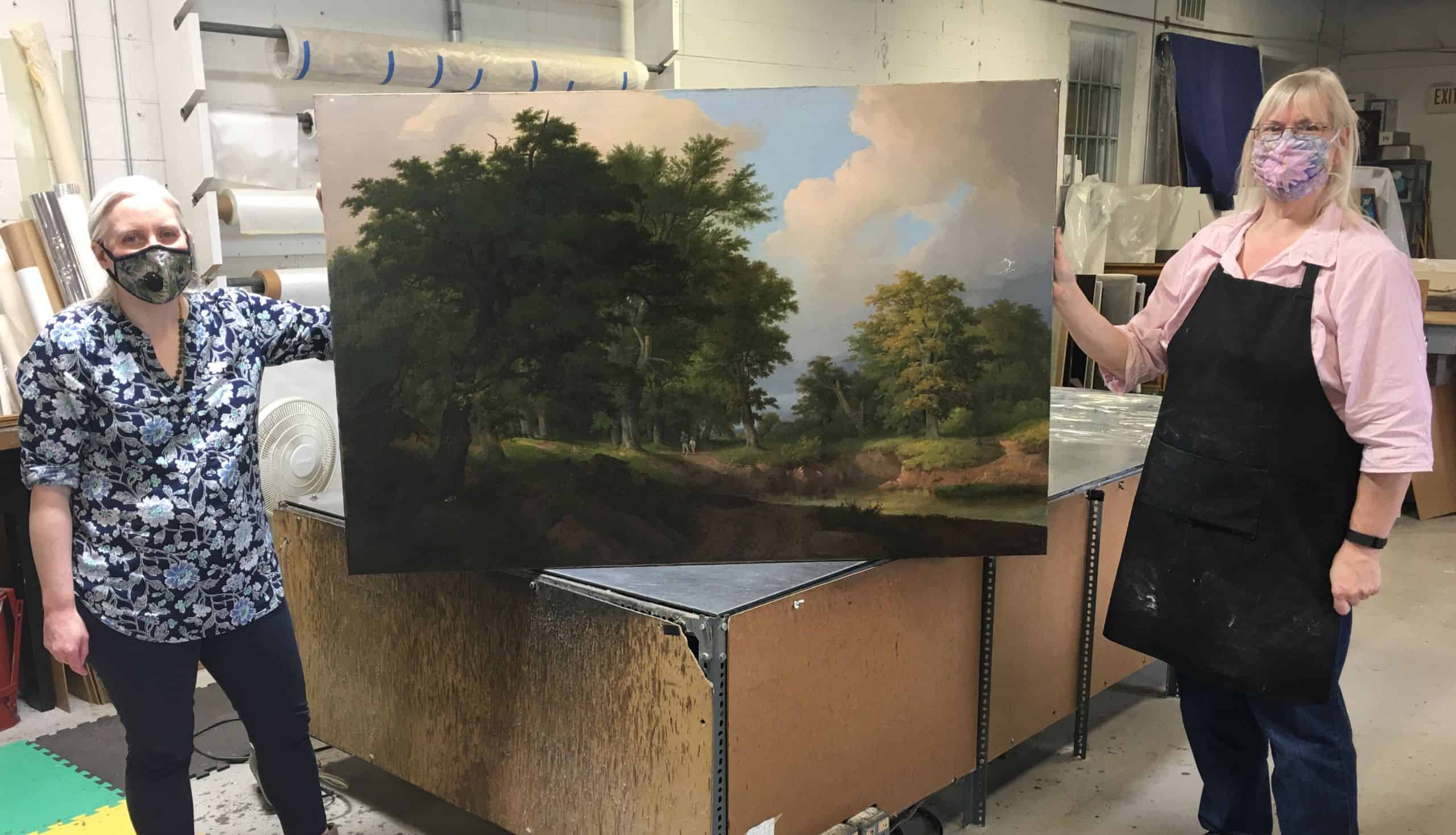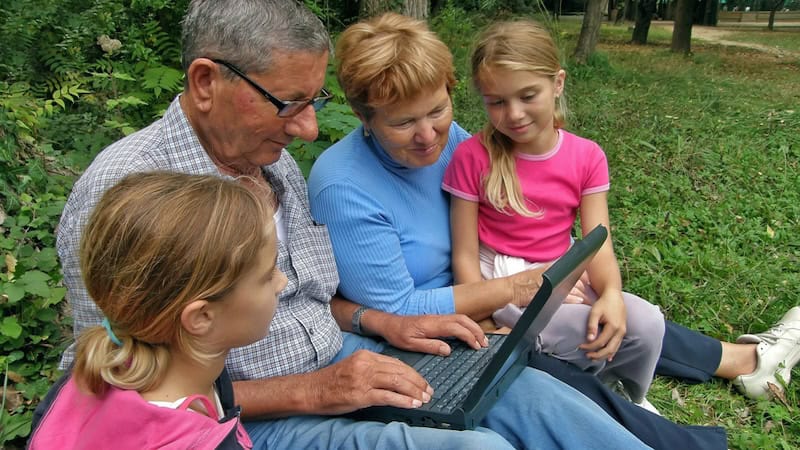Insights & Stories from Art Conservation Experts
Lorraine Brevig and Beth Fulton of Richmond Conservation Studio

Chatting with Lorraine Brevig and Beth Fulton, owners and chief curators of Richmond Conservation Studio, is always interesting.
“And then she did what?!” I gasped.
Lorraine grinned and just shook her head: “She took a family heirloom painting, an 18th-century portrait, and put it into her washing machine to clean off the grime!”
‘Did she add bleach?’ I wondered.
“Sooo … how did that work for her?”
“Not so well. In the spin cycle the stretchers fell apart, the canvas crumbled, and most of the paint washed off – not a lot we could do.”
Oh my.
“Then there was the 19th-century Albert Bierstadt landscape. The owner used paint stripper to remove yellowing varnish, which removed the center of the painting as well. The American College of Fine Arts took that one and hung it upside down as an abstract!”
Progress in the Field

Thankfully we have come a long way in art conservation. The focus of conservation since the 1970s has been to bring science to restoration: such as the use of fiberglass, polyesters, and other inert materials to line oil paintings rather than cotton fabrics, which can shrink and pull in opposite directions. Paintings are now mounted on nap board with safe synthetic adhesives, and vacuum hot tables are used to attach linings to paintings.
“Not at all like the ’50s and ’60s”, adds Beth, “when restorers used pieces of potatoes or bread – even onions cut in half – and rubbed them across paintings to clean them. These left pigment-destroying residues which attracted bugs. Mold also could be introduced by such methods. And flecks of paint were knocked off rather than conserved.
Even worse – tears were repaired by cutting them out, replacing them with a “sacrificial patch” taken from another painting – then “painted to match.” Bubbles sections were X’d through with an exacto knife and re-affixed with super glue!
As Lorraine puts it, “Today each painting is treated as an ‘individual patient,’ and repaired accordingly. You can work from behind with flaking paint on canvas, but not on Masonite. Paintings on wood can expand and contract with changes in temperature and humidity, so this must be taken into account.”
Tickle your brain with a Boomer mini trivia quiz on museums!
Beth continues, “And artistic experimentation can be bad. It is amazing how little many artists know about their paints.” (For example, Leonardo da Vinci’s “Last Supper,” painted on layers of gesso, pitch, and white lead began to deteriorate soon after it was completed.) “Some artists glue pottery into their creations, which rips and tears the canvas. Some have included pieces of hair or hay in their paintings – which shed.” (Imagine that Lhasa Apso suspended by wires in your front parlor!)
Different materials arriving in the 20th century brought their own sets of problems. Artists added bitumen to give that “Old Masters” glow, not realizing that bitumen never dries – ever! Newer paints that absorb oxygen can expand by 12 percent of their volume. When they shrink back, the paint can “gator.”
Art Conservation Expert Insights
Covid-19 has brought challenges as well, but these two talented women have adapted. They offer social distance evaluations, as well as mask and glove friendly curbside service. Customers contact them from as far away as Alaska and London, England. Half of their work comes from museums and half from private collectors. An average restoration may take two to three months, and they conserve up to 300 paintings a year, working on perhaps 25 at any given time.

Richmond Conservation Studio partners with the Virginia Association of Museums in providing conservation work “gratis” for small museums. They host a museum studies course for Washington and Lee and Mary Washington Universities, with tours and training when this is once again possible.
“We have taken VCU interns for a semester,” Lorraine adds, “and also high school juniors for as long as one week – to observe conservation techniques and experience carefully supervised hands-on training.”
Keep It Original
So, the overall goal of the studio?
“To bring a painting back to the artist’s interpretation as closely as possible – using materials easily reversible – and to share current knowledge with a new and growing group of ‘scientific conservators.’”
Still – there is nothing quite like the story of the washing machine. So kindly remember, gentle readers: no bread, potatoes or onions – and paintings are definitely not “dishwasher safe” either.
Restoration is not a DIY endeavor. “Just say ‘No’!” And then take your heirloom to a professional!
Dr. Mark Davy practiced family medicine in Richmond for 35 years and enjoyed every minute. But writing has always been his first love. It is a bit like painting – only painting with words. Click here for Davy’s peek behind the curtain at the making of “The Good Lord Bird,” featuring actor Ethan Hawke, in Powhatan, Virginia.


